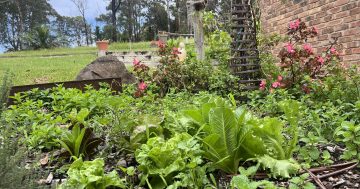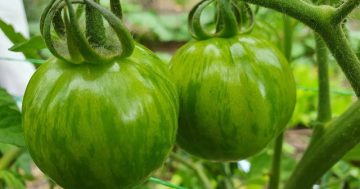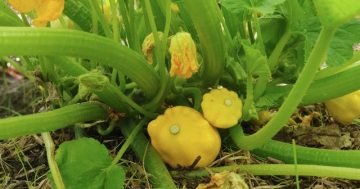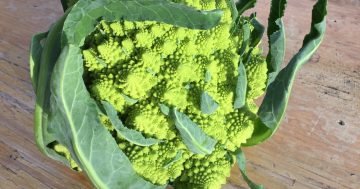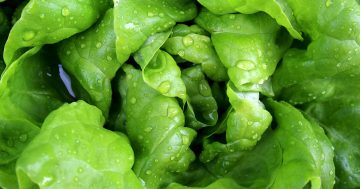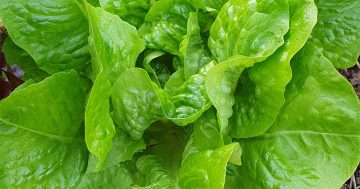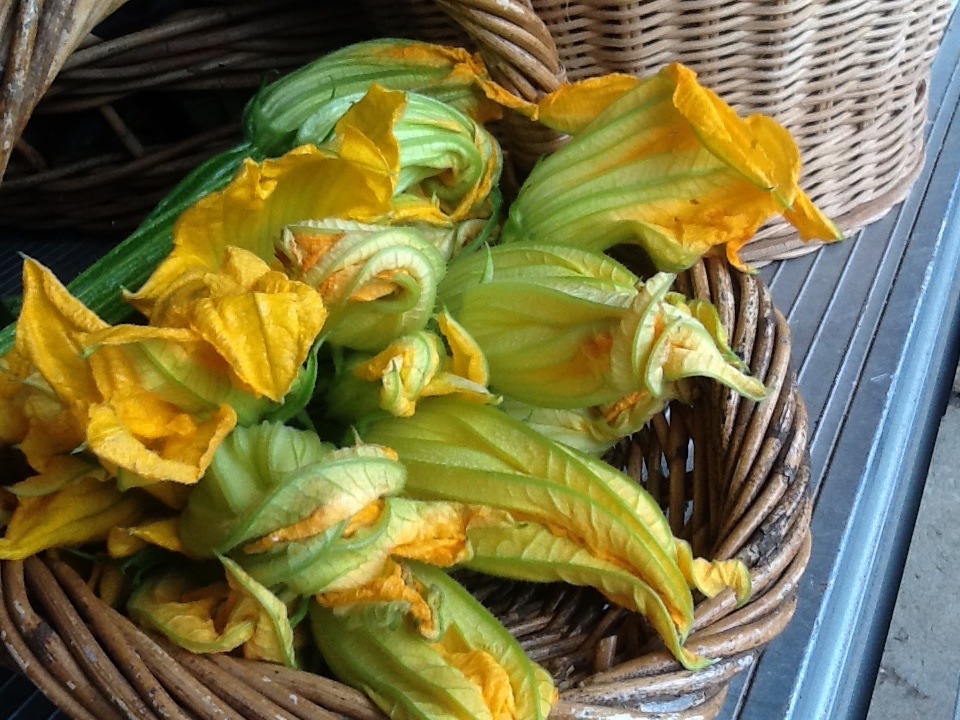
Small zucchinis with flowers attached is a delicious summer vegetable. Photo: Supplied.
The new year brings a warm, somewhat damp mid-summer which makes managing the vegetable garden a bit like rolling the dice.
At least the summer garden is starting to grow fast with a bit of heat, sunshine and warmer nighttime temperatures. But intermittent dull, rainy weather is encouraging snails, slugs and bacterial diseases, which can be very damaging to all crops.
For the last two years, it has been very challenging for many of us to get a win in the vegetable patch. Here and there, success has blessed some and failure cursed others.
The important point is not to take the blame for poor returns on your veggie growing efforts. You can truly blame the weather. Just continue to celebrate the vegetables that do well.
Potatoes have shown their resilience this season. Varieties such as pink fir apple, banana and King Edward are favourites. It is not too late to plant a final crop of quick-growing potatoes to harvest as new potatoes. These should store well in the ground for a winter harvest.
Different varieties of potatoes can have different growing times and are generally divided into early or late seasons. Early season potatoes such as red Pontiac, Kipfler, pink eye, purple Congo and Russian banana take around 70-90 days to reach maturity. Late-season potatoes such as Nicola, Dutch cream, pink fir apple and King Edward can take up to 130 days. So for a January planting of potatoes, it would be best to plant early-season types so they will have time to mature before the frost season starts.
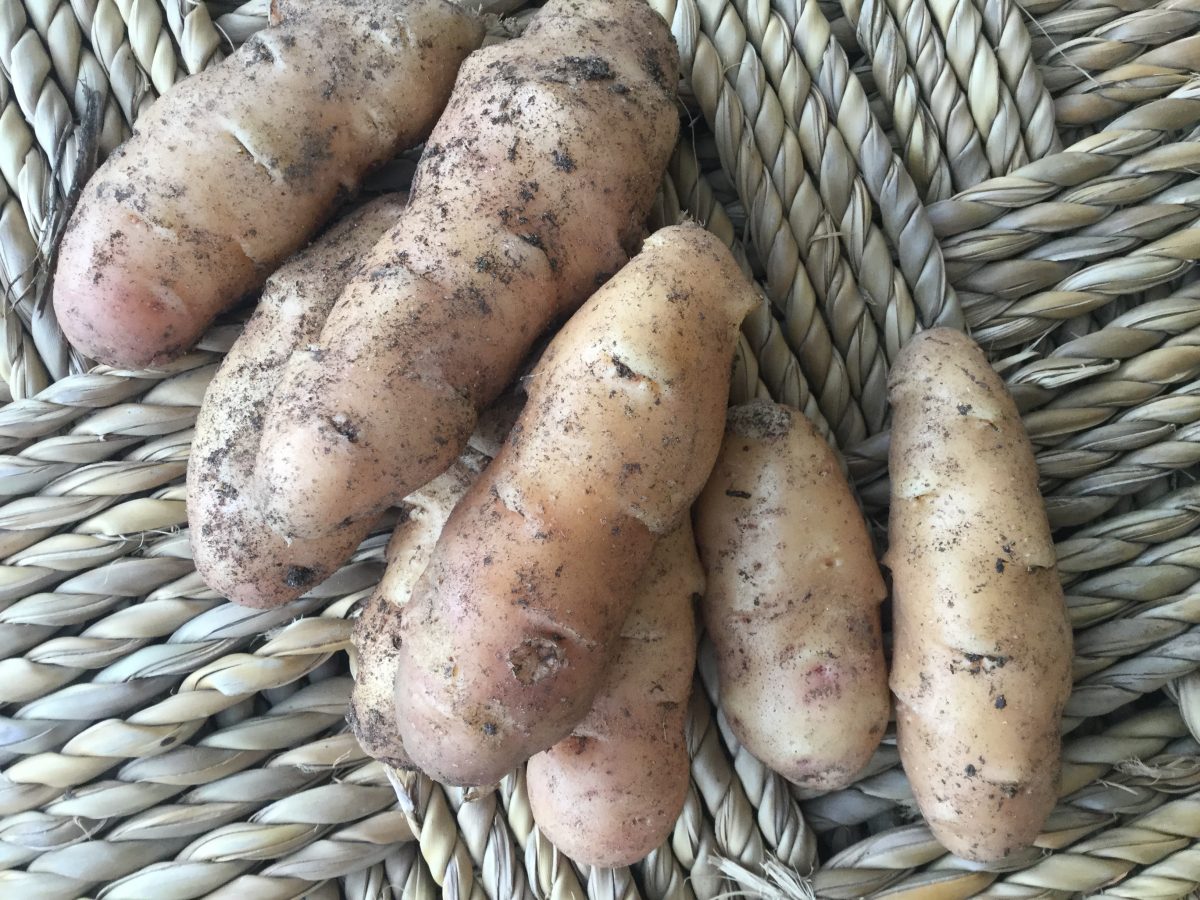
Now is your last chance to plant potatoes for an autumn and winter harvest. Photo: Supplied.
Kohlrabi is another unexpected performer, as is cabbage. If you have managed to keep the white cabbage butterfly in check, harvesting cabbage right now is a terrific reward for your effort. Keep planting cabbage this month for eating in late autumn.
One of the benefits of kohlrabi is that the cabbage caterpillar and aphids don’t seem to do much damage. The hard skin of the kohlrabi bulb protects it and aphids are easily removed from the leaves, of which there are not that many. Kohlrabi, a much-underrated vegetable, can be planted now, along with Brussels sprouts (both European originals that do well as the weather cools).
Kohlrabi, as a member of the brassica family, has that species’ resilience in cool climates and, of course, abounds with nutritional goodness, qualities that home gardeners highly value.
It also has a wonderful flavour, somewhat like a sweet peppery broccoli stem, subtle and smooth texture. It also has an outstanding amount of vitamin C for a vegetable, along with potassium, B6 and fibre. It can be grated and eaten raw in a salad, cubed and cooked in a casserole, or baked in its skin with the weekend roast. It has versatility in abundance!
The leafy greens are always a winner in the garden and the kitchen. We are constantly harvesting and planting all types of lettuce, silverbeet/chard, and many Asian greens.
However, all the greens are having some difficulty with the extremes of a few days of hot weather rapidly changing to wet, cool weather. The silverbeet and lettuces are suffering from snail attacks and the Asian greens are swamped with egg-laying white cabbage butterflies, along with some plants just rushing headlong into flowering.
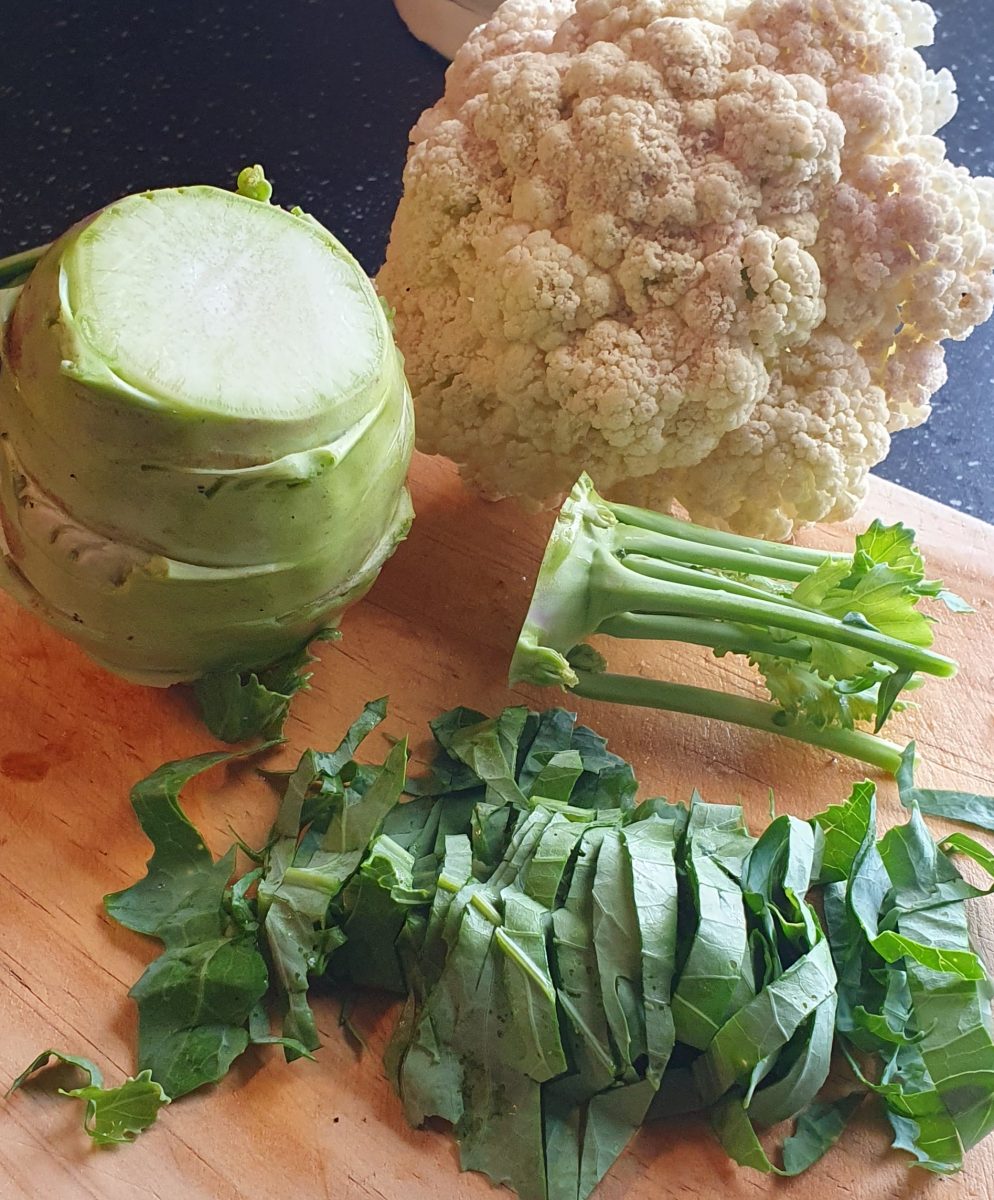
Preparing kohlrabi is straightforward, with delicious results. Photo: Supplied.
It is not possible to stop plants from flowering, but it is possible to manage snails/slugs and caterpillars. Spreading iron-based organic snail/slug pellets works, but they dissolve quickly in the rain. Regular applications are necessary.
Caterpillars can be dealt with by regular spraying. Both neem oil and garlic spray can have some impact. However, Dipel, a biological control, is possibly the most effective. Spraying weekly is essential and must be repeated after rain.
Aside from needing a bit of care, leafy greens are one of the most rewarding vegetables for the home vegetable grower. Adding a bunch of fresh, chemical-free, flavour-packed greens to any meal ensures that meal is nutritious.
Unfortunately, the leafy greens from the shop have a short shelf life, are generally lacking in freshness, and can accidentally be harvested with toxic weeds (as we have seen recently).
Mass-produced food is only as safe as the grower is vigilant and no one will be more vigilant than you when you are growing and harvesting for your family’s health. Just find a square metre of sunny dirt in the garden and plant some silverbeet, coloured chard and pak Choy seeds or seedlings.
Why not add a few green bean seeds around the edge of your square? You won’t regret it! If you can find another square metre of nicely friable soil, try some carrot seeds. These must be grown in moist ground until germination so take advantage of the next wet couple of days to get them started.
January is the last chance to plant corn seedlings, beans and summer squash such as scallopini and zucchini. We’re coming close to the last chance to plant Brussels sprout seedlings too. Any later and the result will be short-stemmed plants giving a low yield.
It’s too late to plant pumpkins, peppers and chilli, tomatoes and eggplant. We must wait now until next year.
Bronwyn Richards and Helen Lynch run Wynlen House Artisan Village Farm and Learning Centre, a small village organic market garden in Braidwood, NSW. Since 2006 they have grown and sold fresh vegetables, eggs, preserves and garlic and teach others to do the same.













